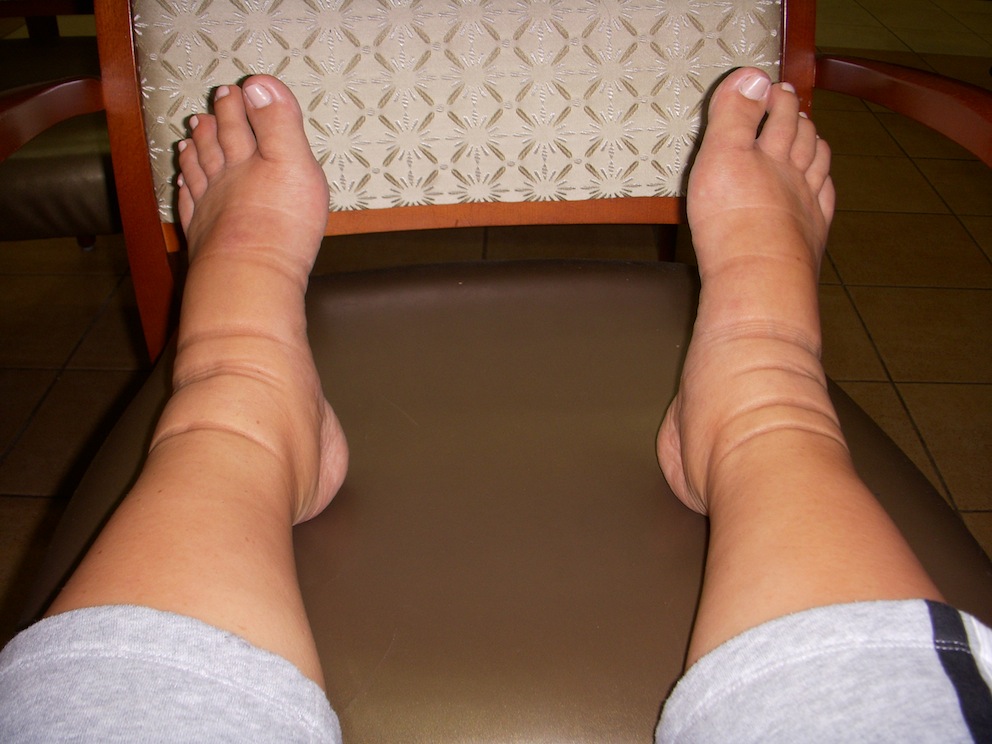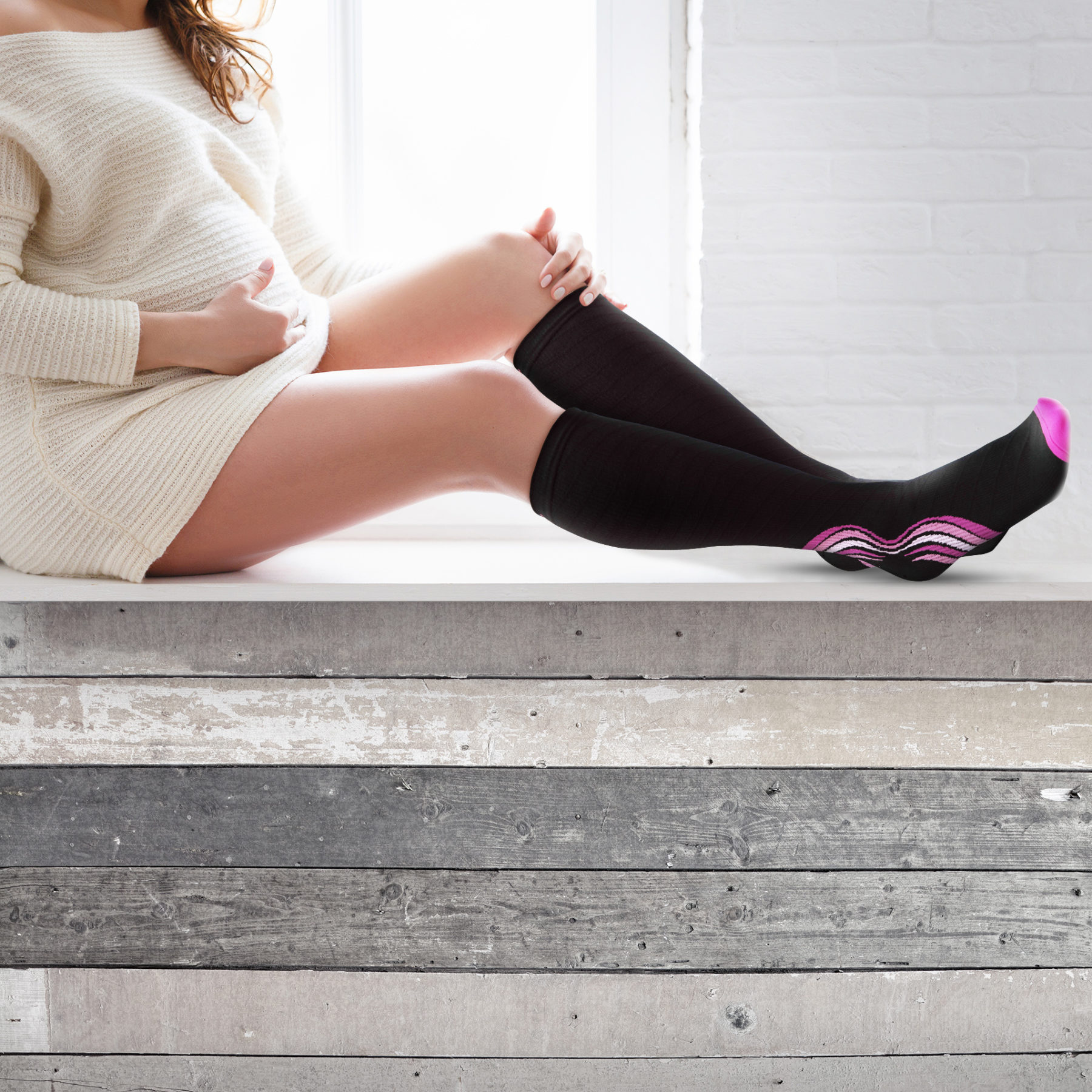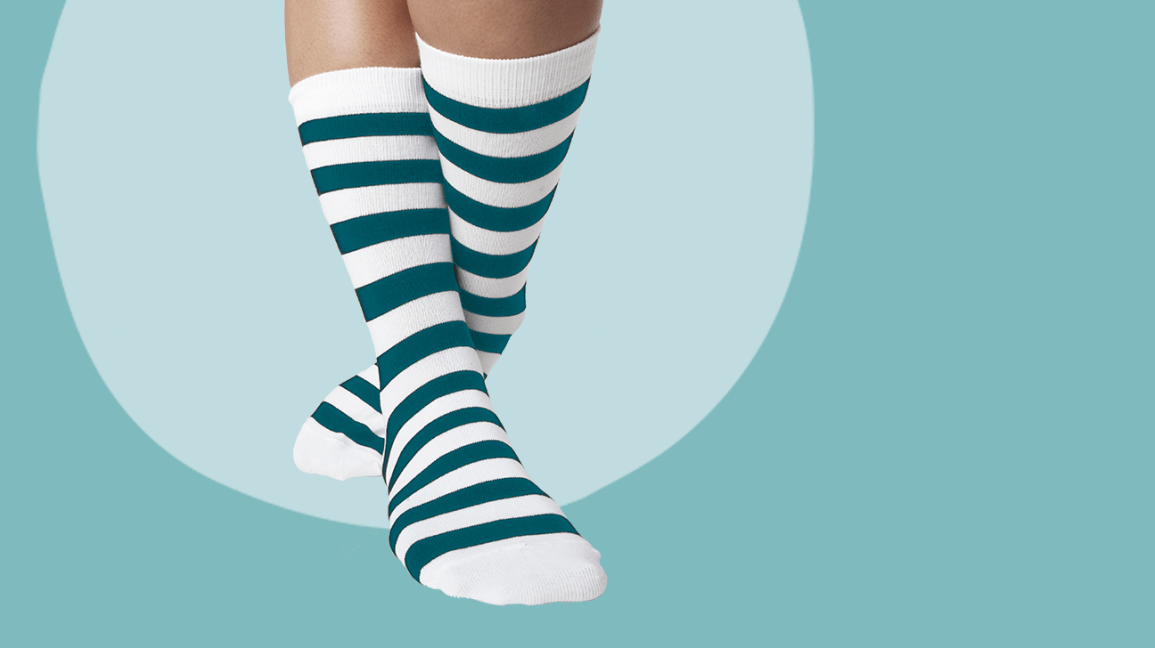What are compression socks?
Compression socks are specially designed to help pregnant women with their medical conditions. They can be used during pregnancy or after childbirth. Compression socks may improve the symptoms of varicose veins, edema, and DVT. The claims for compression socks include increasing blood flow; reducing swelling, pain, and fatigue; improving sleep; relieving leg cramps, and boosting mental well-being.
One study found that compression stockings improved venous distention in some pregnant women but not others. Some pregnant women will need compression socks with graduated pressure to help prevent the symptoms of varicose veins, edema, and DVT.
Who should wear compression socks?
Compression socks are usually worn by people who suffer from conditions like arthritis, swelling (edema), varicose veins, or thrombosis. They may also be used for reducing damage caused by long periods of standing on their feet.
Compression stockings are sometimes worn after surgery to reduce blood loss and swelling. Pregnant women can wear compression socks during pregnancy or postpartum to improve circulation in the legs while sitting or standing for long periods of time. Some women claim that they feel more energized when wearing compression socks during pregnancy because they have better circulation.
What are the benefits of compression socks?
The claims for compression socks include increasing blood flow and reducing swelling, pain, and fatigue; improving sleep; relieving leg cramps, and boosting mental well-being.

Compression stockings may improve circulation during pregnancy by applying pressure on the lower limbs to prevent venous pooling in the veins. Women who wear them say that they feel more energized while wearing compression socks because of better circulation in their legs. Compression stockings worn during pregnancy were found to be effective in some cases, but not others.
How do you use compression socks?
Compression stockings must fit correctly for them to help. They should be worn with the toes facing down (heels pointing up) and with a graduated compression between 20 mmHg at the ankle and 40 mmHg at the calf. There is no evidence that wearing them can cause harm to you or your baby, but there may be side effects.
What are the risks of using compression socks?
Side effects for pregnant women include
- an itchy feeling around the ankles;
- skin irritation;
- raised blood pressure;
- constipation;
- varicose veins (more likely to occur if you already have them);
- swollen feet (edema); leg cramps; nausea; skin changes like bluish discoloration on your toes. If you feel discomfort, pain, swelling, tingling, numbness, burning sensation in your lower limbs.
How effective are compression socks during pregnancy?
One out of every five pregnant women will have symptoms of varicose veins. Symptoms may include heredity, leg swelling (edema), pain, and skin changes like bluish discoloration on your toes.
Pregnant women may benefit from wearing compression stockings by applying pressure to the lower limbs to prevent venous pooling in their veins or to relieve symptoms due to long periods of standing on their feet during pregnancy.
What are these socks made of?
Compression stockings are made of elastic fibers to apply pressure on the lower limbs. They come in different styles, brands, sizes, and prices. Some compression socks for pregnant women are made with spandex, nylon, or Lycra.
How long should you be wearing compression socks?

The length of time you wear compression socks depends on your symptoms. Compression stockings should be snug against the skin but not tight enough to reduce blood flow or cause pain. Pain is usually a sign that the compression stockings are too small for you.
What do you need to consider when wearing compression socks?
- You should not use compression stockings if you have blood clotting problems;
- If your doctor has advised you not to wear them;
- If you have discomfort, pain, swelling, tingling, numbness, or burning sensation in your legs;
- If your skin is red or irritated where the stocking touches it;
- If you suffer from severe varicose veins without medical treatment. It is also important that you have the correct size, fit, and length of compression socks.
Where can you buy these socks?
Compression stockings are widely available at medical supply stores online. They are also available at local grocery store pharmacies or department store beauty sections. Some retailers offer free home delivery services for their products. You can also find them on various websites, amazon, Walmart, and eBay.
TOP-10 best compression socks
MadeMother Maternity compression socks
This brand is perfect for expecting and new mothers who need extra support. These socks help reduce swelling and fatigue while promoting better circulation in the legs. They offer a wide range of sizes from X-Small to X-Large.
Vitalsox Graduated Compression Calf Sleeves
These socks help relieve leg pain, varicose veins, swelling, and tired feet. The manufacturing material is 90% Nylon and 10% Spandex. Sizes available: Small (5 1/4" - 6 3/8" calf circum.), Medium (6 1/2" - 7 5/8" calf circum.) Large (7 1/4" - 8 3\/4" calf circum.)
Juzo 24/7 socks
These compression stockings are made out of 80% Nylon and 20% Spandex fabric. They provide all-day relief from swelling, fatigue, and varicose veins. Available in black color only, sizes: S ( shoe size 5 - 6.5) M (shoe size 7 - 9) L (shoe size 10-12.5), XL for big sizes 13+.
Kyoti Active socks
Manufactured from 92% nylon with spandex stretch providing high-performance support to the foot area. This sock also comes in different colors. The available sizes are XS-XL.
Femom One pair of Compression Socks by Bravado!
This product is made of nylon using seamless construction. Its special compression material provides maximum comfort while relieving leg pain, swelling, varicose veins, and tired legs. Available sizes: X-Small - X-Large ; available colors: Black/ Gray, Beige / Fuchsia / Aqua, Gray / Navy Blue.
Activa relief socks
These socks with graduated compression technology are designed to give you firm support around your calf muscles, ankles, and feet. It helps relieve tired legs , arch strain, swollen ankles with graduated pressure that targets problem areas most in need of support. Available in black color only; Sizes: Small (5 1/4" - 6 3/8" calf circum.), Medium (6 1/2" - 7 5/8" calf circum.), Large (7 1/4" - 8 3\/4" calf circum.)

Vitalsox Graduated Compression Socks
These compression knee-high socks provide relief from tired, aching legs and feet while supporting weak or fallen arches. Made out of 90% Nylon and 10% Spandex fabric; available in black color only; sizes: Small (5 1/4" - 6 3/8" calf circum.), Medium (6 1/2" - 7 5\/8 "calf circumference), Large (7 1/4\"- 8 3\/4\"calf circumference).
Juzo silver 20-30 mmHg
These compression stockings are made out of 75% nylon and 25% Lycra. They provide relief from tired, aching legs and feet, as well as help to prevent swelling. Available colors: Black; sizes: Shoe size 5 - 10 (X-Small) 11 - 13 (Small), 14 - 17 (Medium), 18 - 20 (Large), 21+( X-Large).
Dr. Motion Compression knee-hi socks
Manufactured with the highest quality materials; this product provides pain relief for plantar fasciitis and arthritis. It also improves circulation and stabilizes muscles and joints. The available sizes: M ( shoe size 6 1/2 – 8 1/2) L ( shoe size 8 3\/4 – 11 1/2).
Vitalsox Graduated Compression Socks
These compression socks are made out of 90% Nylon and 10% Spandex. They provide relief from tired, aching legs and feet, as well as help to prevent swelling. Available in black color only; sizes: Small (5 1/4" - 6 3/8" calf circum.), Medium (6 1/2" - 7 5/8 "calf circumference), Large (7 1/4\"- 8 3\/4\"calf circumference).
What should you look for when choosing socks?
As you decide to buy compression socks, pay attention to the following features:
- color - compression socks are available in different colors. Depending on your usage of them you can choose a colorless visible while wearing shoes or not, e.g. black.
- material composition - make sure that the manufacturing material is made out of high-quality products which are safe for sensitive skin. It should be at least 90% Nylon, 10% Spandex fabric, Lycra, Thermoplastic Elastomer (TPE).
- compression class - this parameter reflects how tight will be the sock's pressure around your legs and feet in order to avoid possible injuries related to insufficient or too tight socks. Compression classes marked on socks range from 20 mmHg to 50 mmHg, while 20-30 mmHg is more common for everyday usage.
- the label - compression socks with good quality will have several labels, such as " ergonomic design," " anti-bacterial and odorless," and " graduated ."
- size - make sure you choose socks that fit your feet and calves. If the sock is larger than it should be, then its material will stretch around your leg and create pressure points, while too tight socks may also cause different kinds of injuries related to insufficient blood circulation.
- price - compression socks are not cheap products due to extra materials used for quality manufacturing. However, if you buy the right pair on the beginning, then they will last for a long time without losing their properties. A reasonable price range for good quality compression stockings is about $8-$60 per piece depending on the brand and size of them.
Bottom line
Compression socks are designed to aid circulation, relieve tired, aching legs and feet, prevent swelling, as well as reduce the effects of varicose veins. Manufacturers make them available in different compression strengths, sizes, colors, patterns, feet shapes, materials.